300 years of ‘The Life and Strange Surprizing Adventures of Robinson Crusoe’
Daniel Defoe’s castaway tale, The Life and Strange Surprizing Adventures of Robinson Crusoe, was first published 300 years ago on 25th April 1719, Defoe’s debut as a writer of fiction. The first edition did not carry Defoe’s name but was presented as the autobiography of a ‘Mariner’. This ‘autobiography’ tells the story of Robinson Crusoe (born Robinson Kreutznaer), a young man who runs away from home and encounters shipwrecks, pirates and endures 28 years living on an uninhabited island. The preface of the book sets up the story as an example of the ‘Wisdom of Providence’ and of the resilience of man, though there are multiple readings of the novel in terms of capitalism, trade and British imperialism.
From the beginning Robinson Crusoe proved to be a popular novel, with a further five authorised editions within the first four months of publication. The popularity of the novel is exemplified by the numerous translations and adaptations of the story in multiple mediums, and even a literary genre named for the book, ‘Robinsonade’.
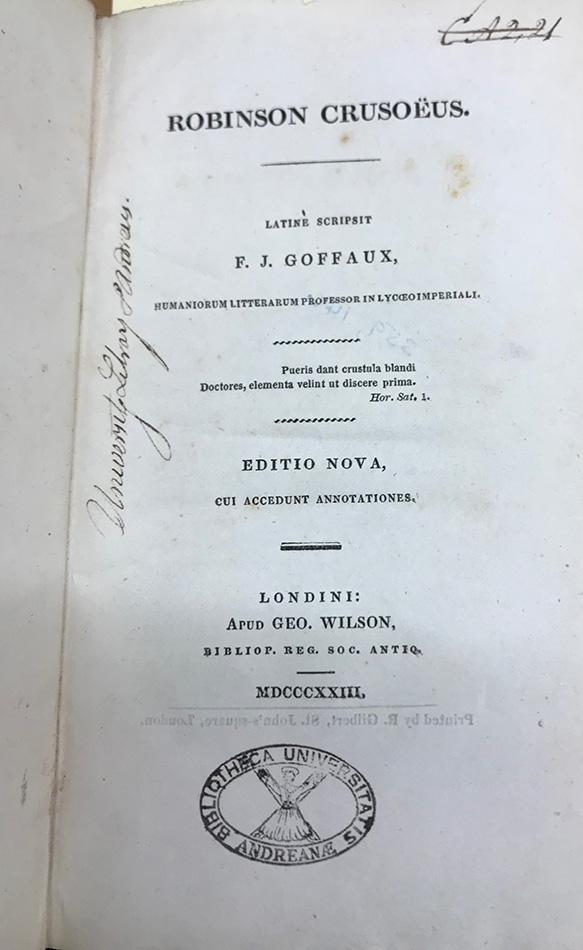
Examples of the proliferation of the novel include a copy translated into Latin (1823) by Francois J Goffaux, which was, according to the preface, to offer an alternative to the usual ‘wearisome and dull works of Roman literature’ usually offered to young boys. This translation however is not an exact translation of Defoe’s work but of the German adaptation of the original by Joachim Heinrich Campe, Robinson der Jüngere (Robinson the Younger) (1779-80), which itself was translated into multiple languages, illustrated here by a 1788 edition in English translated from French.
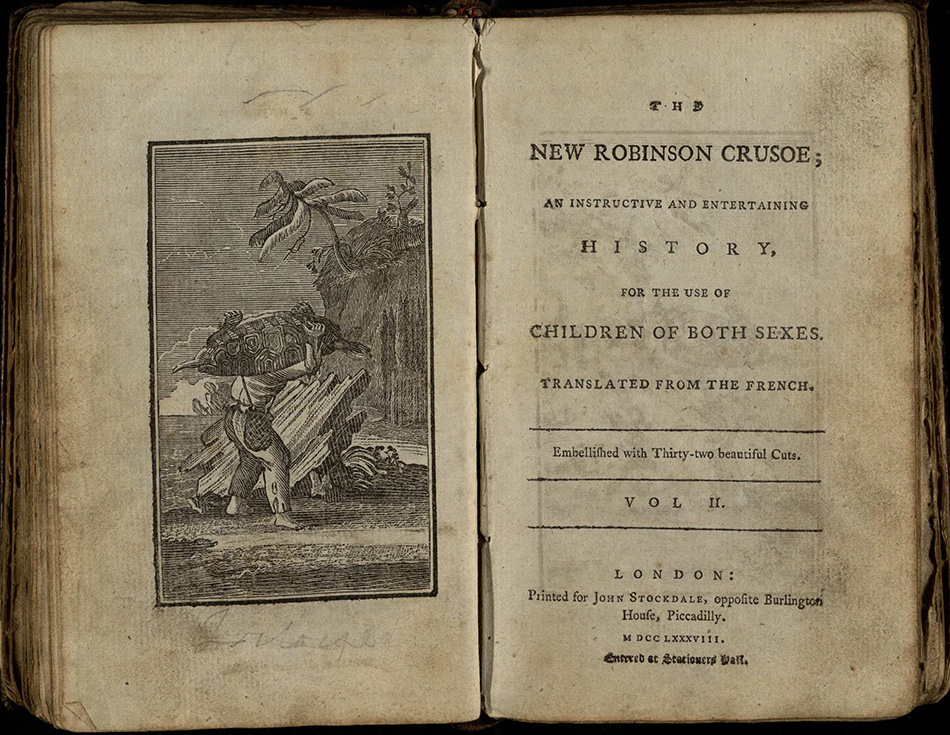
Defoe’s work also influenced other aspects of culture, as demonstrated by Charles Neate’s A fantasia for the piano forte: upon the savage dance in Robinson Crusoe [1821].
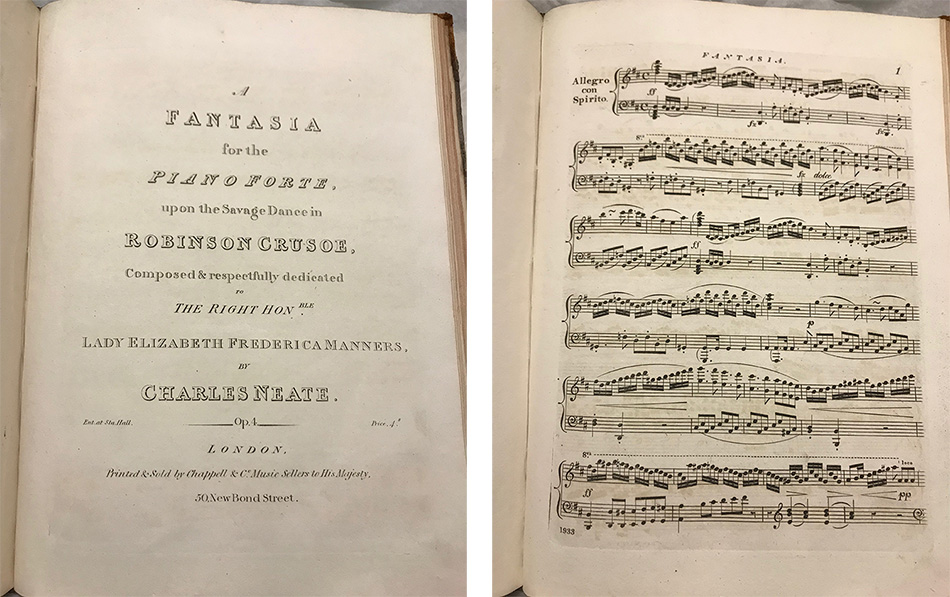
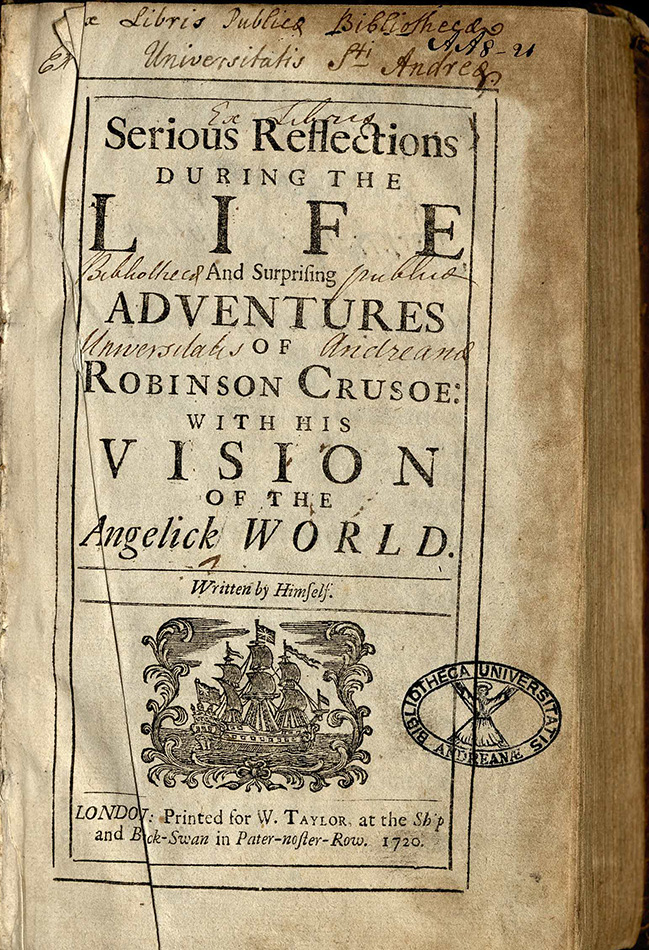
In his lifetime Defoe published two sequels to the novel, The Farther Adventures of Robinson Crusoe; Being the Second and Last Part of His Life (1719) and Serious Reflections During the Life and Surprising Adventures of Robinson Crusoe: With his Vision of the Angelick World (1720). This third book is a series of essays in the voice of Robinson Crusoe and was published with an engraved map of the island with scenes from the original novel.
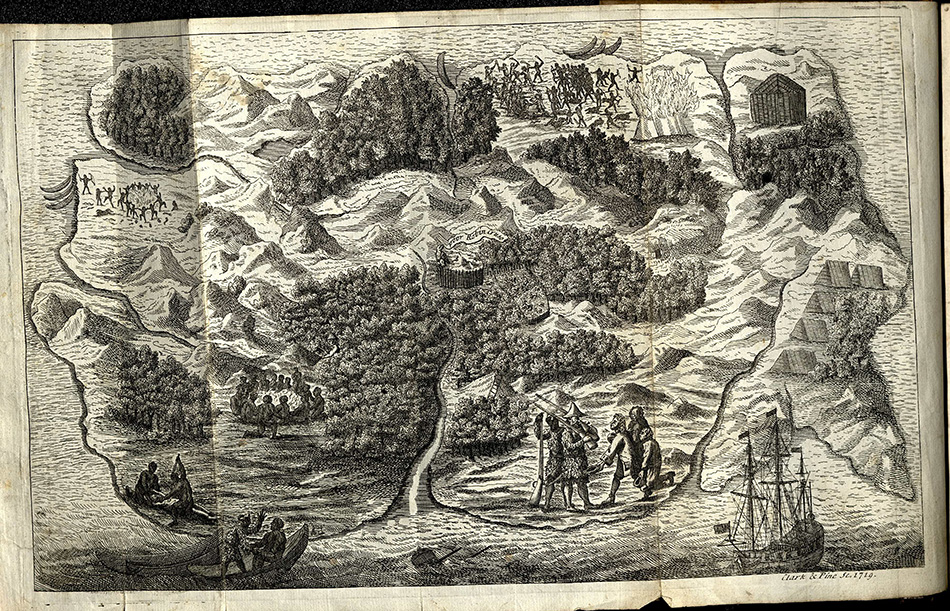
There is local connection between Defoe’s novel and Fife, as it has long been thought that Robinson Crusoe was based on the experiences of mariner and castaway, Alexander Selkirk. Selkirk (also spelled as Selcraig or Selchcraig) was a local man, born in Lower Largo, Fife in 1676 – the seventh son of John Selcraig and Euphan Mackie. Selkirk served on a number of ships throughout his life but is most well-known for being stranded on Más a Tierra, one of the Juan Fernández Islands, for four years and four months from 1704 to 1709.
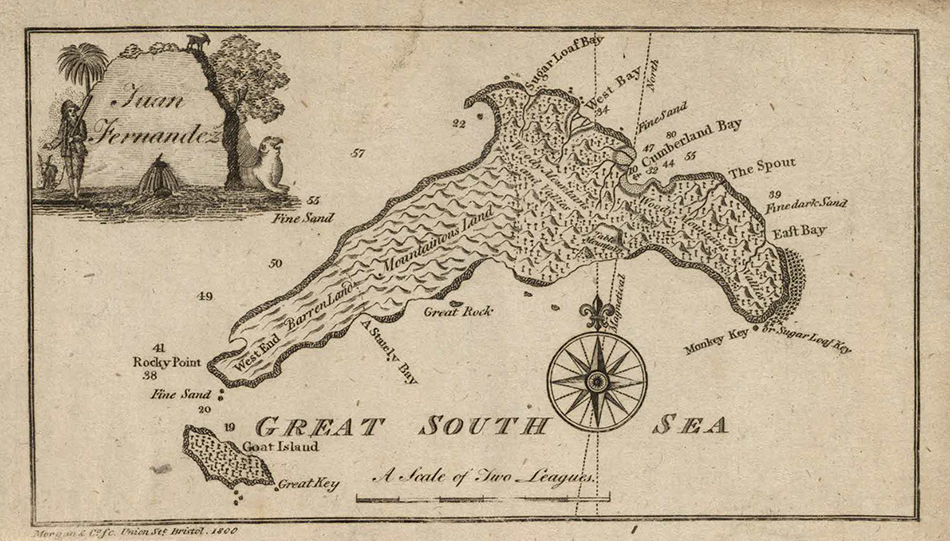
He started his life at sea at an early age. The first record of this is in the Largo Kirk Session records. The Kirk Session is the ruling body within each Church of Scotland parish which historically administered punishment to errant parishioners. Alexander Selkirk (Selchcraig) is called before the session of Largo parish on 25th August 1695 for his ‘undecent carriage in ye church’. The minutes of 27th August the same year reveal his failure to appear before the session ‘being gone away to ye sea’.

Selkirk’s wilful nature comes through in the further entries in the Kirk Session record for 1701. Having returned home, Alexander is called before the Session again to answer for a violent dispute with his brother:
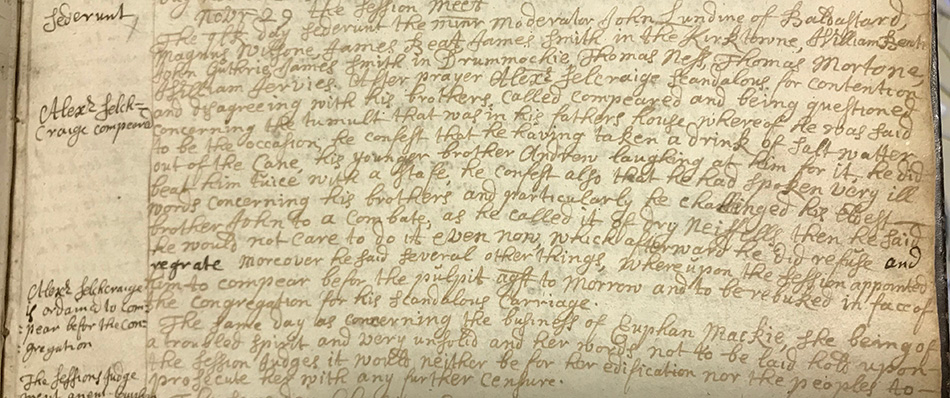
After prayer Alexr Selcraige scandalous for contention
and disagreeing with his brothers, called compeared and being questioned
concerning the tumult that was in his fathers house whereof he was said
to be the occasion, he confest that he having taken a drink of salt watter
out of the Cane [can], his younger brother Andrew laughing at him for it, he did
beat him tuice with a stafe, he confest also that he had spoken very ill
words concerning his brothers and particularly he challenged his eldest
brother John to a combate, as he called it of dry neiffells [fisticuffs] then he said
he would not care to do it even now, which afterward he did refuse and
regrate moreover he said several other things, whereupon the session appointed
him to compear befor the pulpit ag[ain]st to morrow and to be rebuked in face of
the congregation for his scandalous carriage.
Selkirk left for sea again when he was appointed master of the ship the Cinque Ports in May 1703 under the command of Captain Charles Pickering. Pickering died on the coast of Brazil and was replaced by Captain Thomas Stradling. In September of 1704, while in port at Juan Fernandez, Selkirk and Captain Stradling argued over the state of the ship – Selkirk stating that he would rather stay on the island than continue on an unseaworthy ship. The captain took him at his word and left him on the island! Selkirk remained on the island alone until the Duke and Duchess commanded by Captain Woodes Rogers arrived in February 1709 and rescued him.
It was Captain Woodes Rogers’s A Cruising Voyage Round the World (1712) which gave the full account of Selkirk’s experiences as a castaway on the island. According to Rodgers, Selkirk had been left with “his cloaths and bedding, with a fire-lock, some powder, bullets and tobacco, a hatched, a knife, a kettle, a bible, some practical pieces, and his mathematical instruments and books.” In fact some of his belongings are now cared for by the National Museums of Scotland who hold Selkirk’s sea-chest and drinking cup which he apparently used on the island.
Rodgers reports that Selkirk suffered from melancholy for the first eight months of his time on the island, however was resourceful. He “built two huts with pimento trees, covered them with long grass, & lined them with the skins of goats” and kept his mind busy employing “himself in reading, singing psalms, and praying; so he said he was a better Christian, while in this solitude, than ever he was before, or than, he was afraid, he should ever be again”. An interesting observation in light of the Kirk Session entries!
Other voyage narratives which could have influenced Defoe include the previous resident of Más a Tierra, a Miskito man known as Will who resided on the island from 1681 to 1684 or Henry Pitman, who published his narrative of his experiences on the Caribbean island of Tortuga in A Relation of the Great Sufferings and Strange Adventures of Henry Pitman, Chyrurgion to the Late Duke of Monmouth (1689).
While Defoe may have used several different sources for his novel there are distinct parallels between Rogers’s account of Selkirk and Defoe’s Robinson Crusoe. Roger’s describes the man they met in February 1709 as a “with a man clothed in goats skins, who looked wilder than the first owners of them”, an image very similar to the illustration of Crusoe included in the first edition of Robinson Crusoe and shown here in a later 1766 edition.
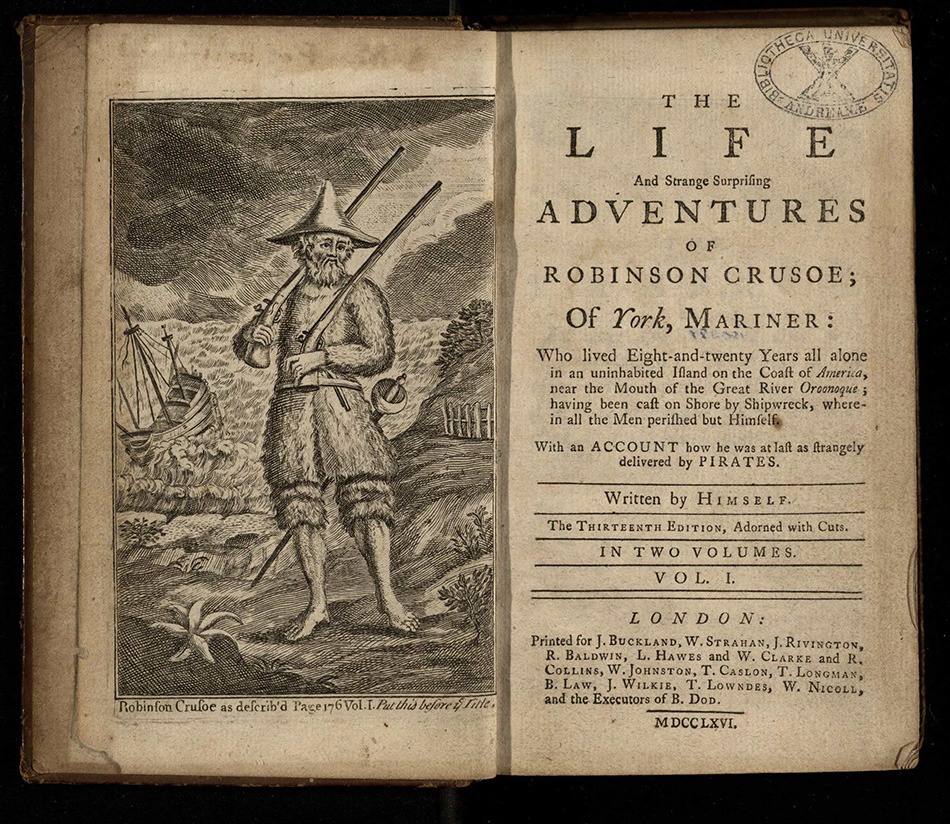
In Rodgers’s account we learn that during Selkirk’s time on the island “The rats gnawed his feet and cloaths whilst asleep, which obliged him to cherish the cats with his goats flesh, by which many of them became tame, that they would lie about him hundreds […] he likewise tamed some kids: and, to divert himself, would, now and then, sing and dance with them, and his cats”, illustrated in the account of Selkirk’s life by Isaac James in 1800. This is again reminiscent of Crusoe who also tamed kids and held banquets with his parrot and dog.
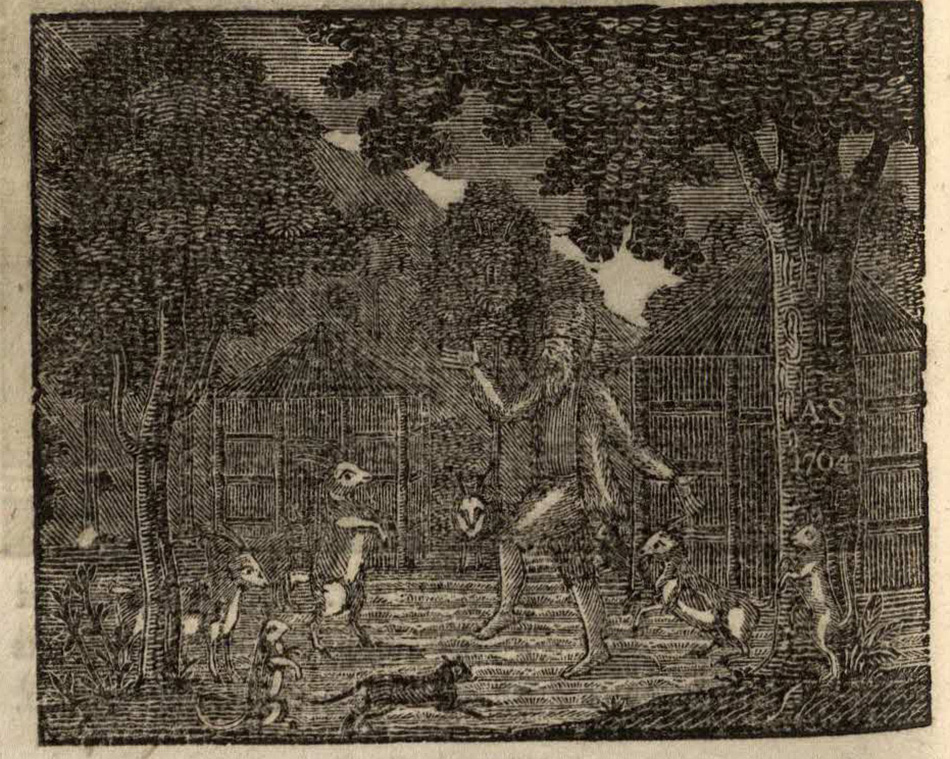
Rodgers’s account of Selkirk’s experiences was published separately in pamphlet form with the title Providence Display’d, or a very Surprizing Account of one Mr. Alexander Selkirk, Master of a Merchant-Man call’d the Cinque-Ports… (1712), drawing a parallel with the theme of ‘Providence’ which would be prominent in Defoe’s Crusoe. The connection between Selkirk and Crusoe was enough for Rodgers’s account of Selkirk to be annexed to an 1801 edition of the novel.
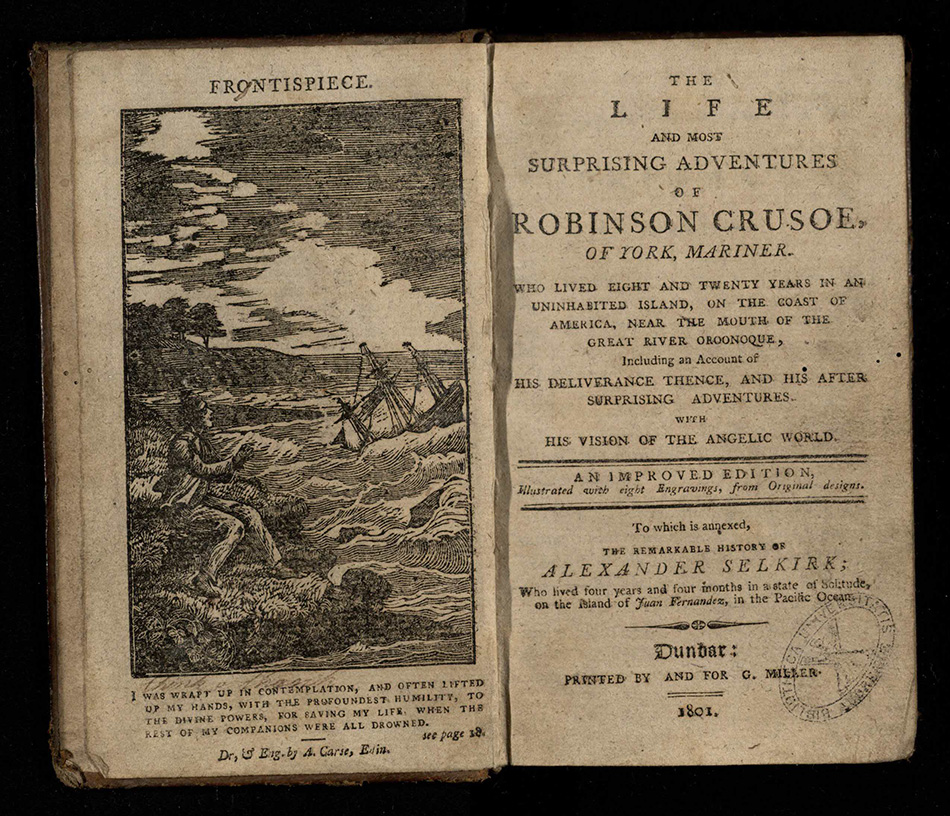
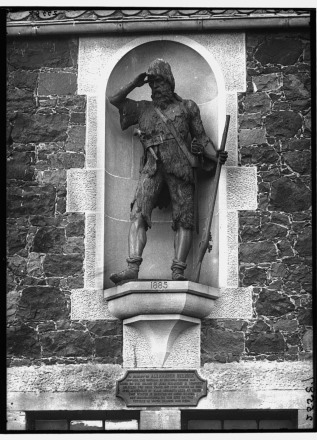
For the people of Largo, Selkirk was commemorated with a statue, unveiled on 11th December 1885 by the Earl and Countess of Aberdeen. Selkirk is shown in his goatskins with a plaque claiming him as the ‘original of Robinson Crusoe’:
“In memory of Alexander Selkirk, mariner, the original of Robinson Crusoe who lived on the island of Juan Fernández in complete solitude for four years and four months. He died 1723, Lieutenant of HMS Weymouth, aged 47 years. This statue is erected by David Gillies, net manufacturer, on the site of the cottage in which Selkirk was born.”
This week the Main Library will be hosting a display of items on the castaway theme in honour of the 300th anniversary of Defoe’s Robinson Crusoe and its legacy.
Sarah Rodriguez
Principal Archives Assistant
Some background information has been taken from Defoe D, Thomas Keymer, and James W. Kelly. Robinson Crusoe. Oxford: Oxford University Press, 2008.
Wonderful article and information. Thanks. I 'll share, take care.
We really enjoyed this blog. We also currently have a small display on Robinson Crusoe in the Wren Library, Cambridge.
Thanks, so glad you enjoyed the post.
Interesting, thank you. Have you seen Charles Boyles' very relevant critique of 'Robinson Crusoe' (Empire of the Sun), in the Guardian Review, 20th April?
Thanks for the suggestion. We will be sure to have a look.